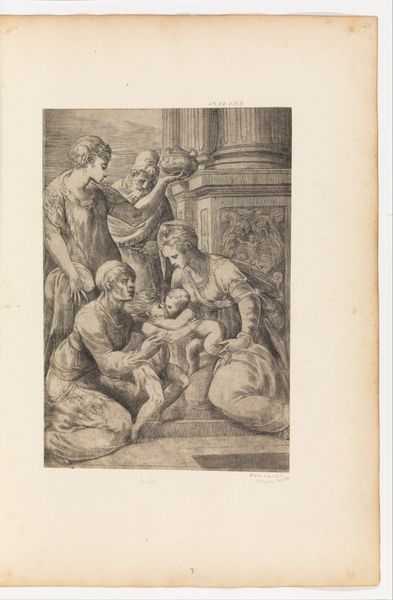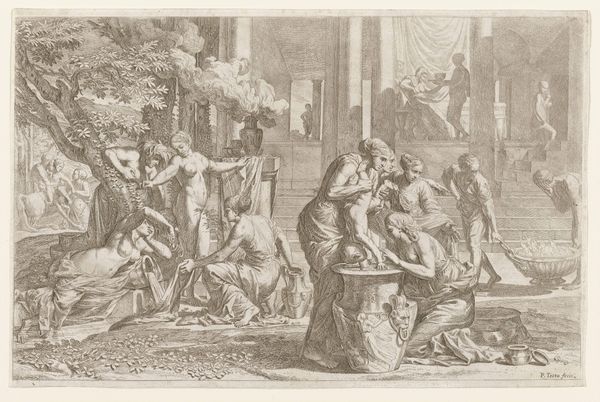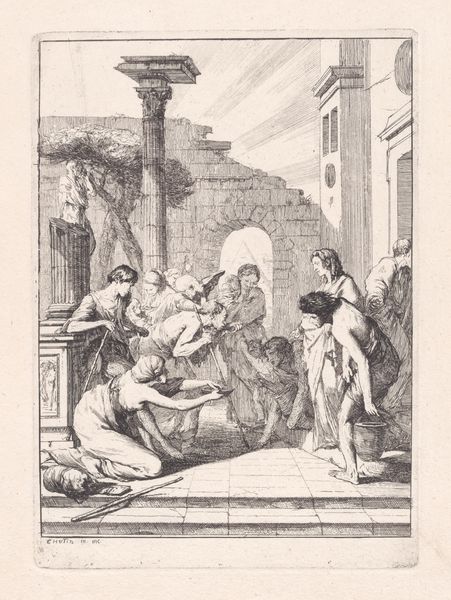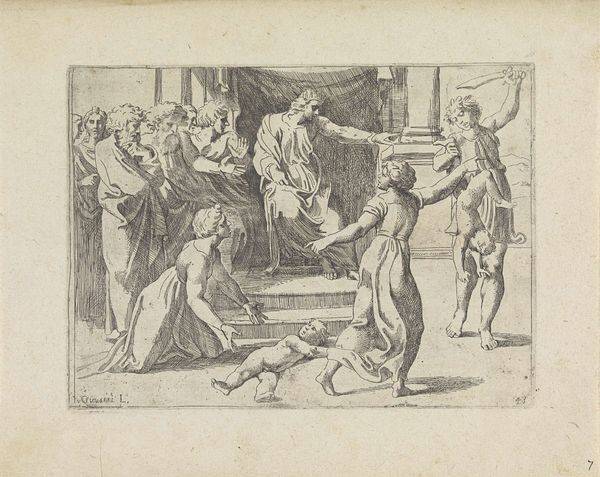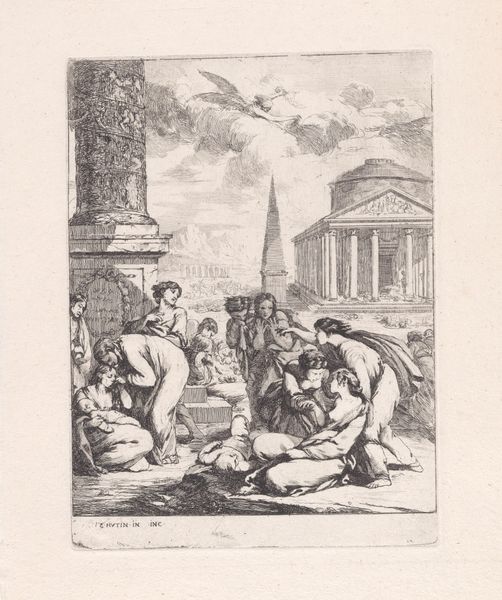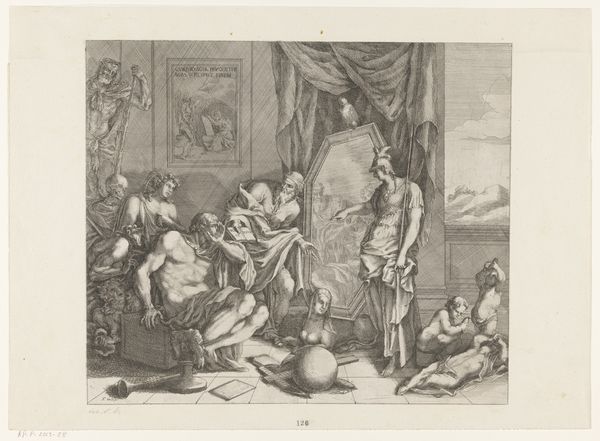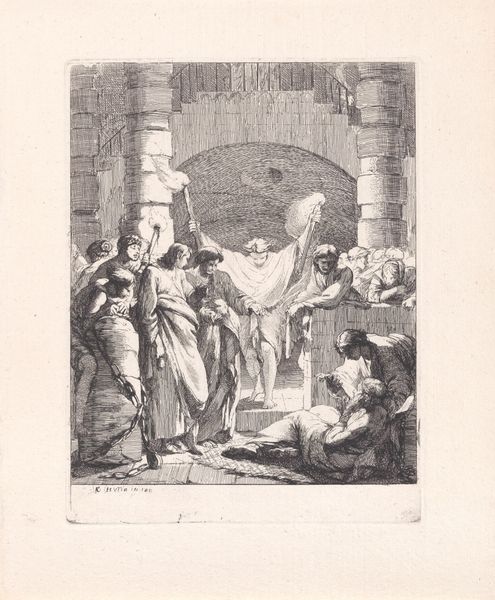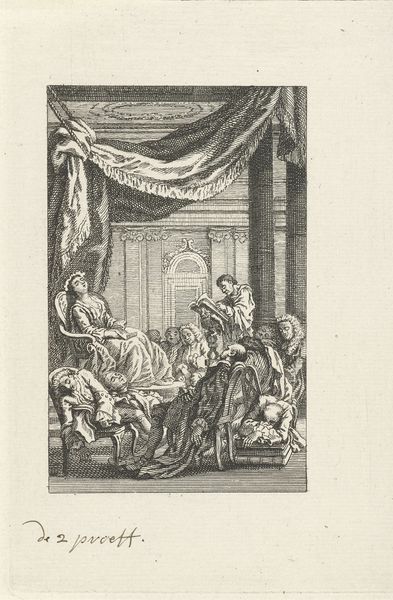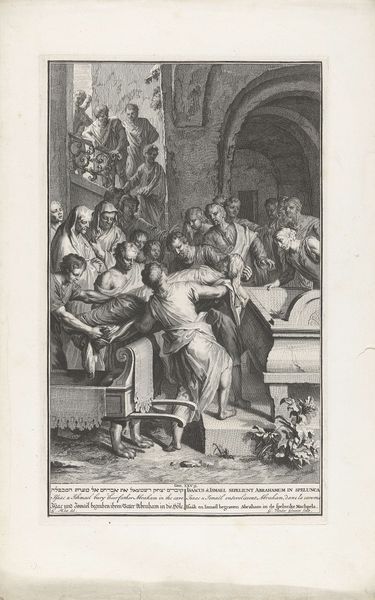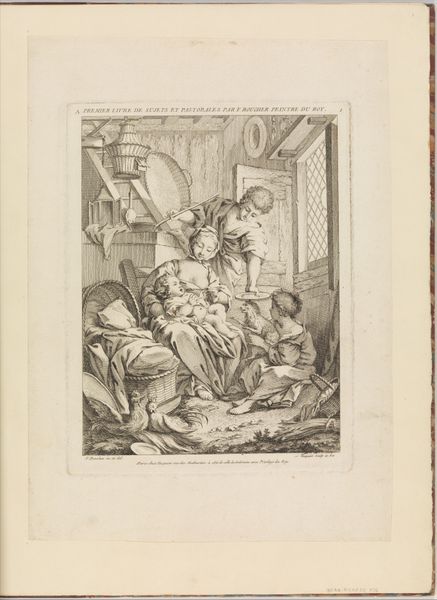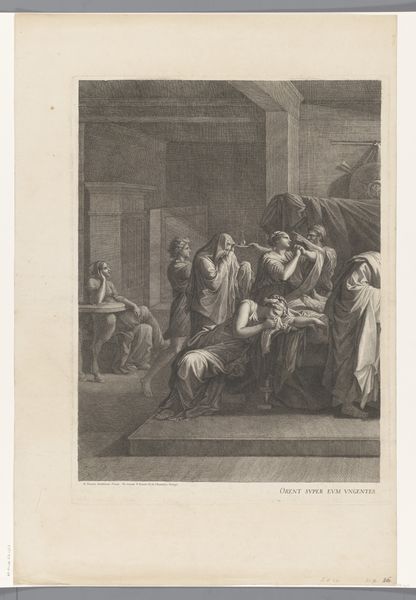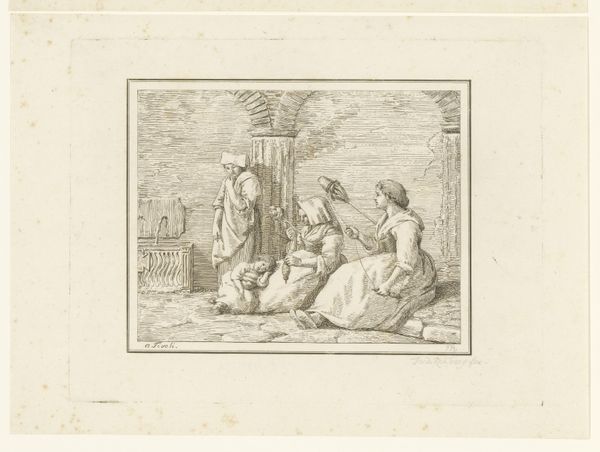
drawing, print, etching, engraving
#
drawing
#
narrative-art
#
baroque
# print
#
etching
#
classical-realism
#
figuration
#
line
#
genre-painting
#
history-painting
#
academic-art
#
engraving
Dimensions: Sheet (Each): 11 3/4 × 9 1/2 in. (29.8 × 24.2 cm) Plate: 9 1/4 × 6 13/16 in. (23.5 × 17.3 cm)
Copyright: Public Domain
Curator: The work before us, "Clothing the Naked," is an engraving by François Hutin, created sometime between 1732 and 1763. It’s currently held here at the Metropolitan Museum of Art. Editor: Oh, it’s like a dance of light and shadow. So much packed into such a small frame; it feels almost biblical in its gravity, doesn't it? A strange mix of tenderness and formality. Curator: Precisely. The composition uses classical elements—note the architectural ruins and the draping fabrics—to construct a scene rich in allegorical possibilities. Hutin’s command of line is particularly striking; it both defines form and suggests emotional depth. Editor: Yes, and it feels almost cinematic—like a spotlight illuminating different gestures within the crowd. I’m drawn to the way he captures these small moments—someone reaching out, a head tilted down… What exactly is supposed to be happening here? Curator: Well, considering the title, it clearly deals with the theme of charity, perhaps derived from Christian allegories. There’s a strong sense of the theatrical; see how Hutin arranges the figures to create a visual narrative. Consider also the dynamic contrast between the figures in shadow and those emerging into light—a calculated semiotic technique used to guide the viewer’s interpretation. Editor: Semiotic... right! For me, it’s more about the human touch rendered through the crisp lines and contrasting tonal ranges. It gives the whole image a sense of immediacy—and intimacy, despite all those ruins around them. I wonder what story Hutin wanted to tell us beyond just “clothing the naked?” Curator: It is a compelling piece—one that invites us to contemplate the role of representation in conveying moral concepts and social responsibility during the Baroque period. Editor: I'd agree, and to also appreciate how an image rendered with such skill can speak to us about enduring values across centuries and changing styles.
Comments
No comments
Be the first to comment and join the conversation on the ultimate creative platform.

